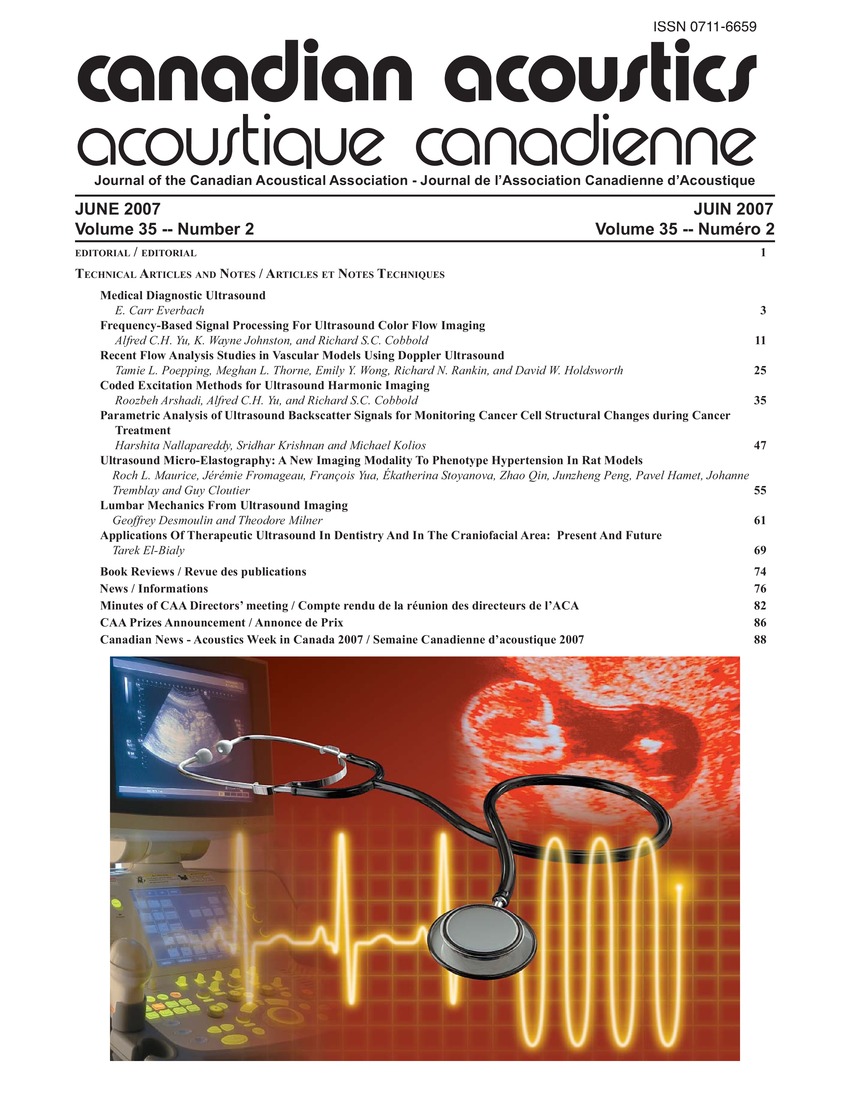Ultrasound micro-elastography: A new imaging modality to phenotype hypertension in rat models
Mots-clés :
Biological organs, Blood, Blood vessels, Elasticity, Rats, Stiffness, Ultrasonic imaging, Carotid artery, Elastogram, Strain cartography, Ultrasound probesRésumé
L’hypertension est connue pour entraîner des dommages d’organes incluant les vaisseaux sanguins et les reins. Notamment, des études menées sur des modèles de rongeurs ont permis de démontrer que cette pathologie est influencée par certains facteurs structuraux et fonctionnels touchant les artères, tels l’hypertrophie et le remodelage. En d’autres termes, l’hypertension s’accompagne de modulations des propriétés mécaniques des artères. Similairement, la néphrosclérose est caractérisée par des changements de propriétés mécaniques du tissu rénal. Cet article introduit deux nouvelles modalités d’imagerie ultrasonore ayant pour objectifs la caractérisation non-intrusive des propriétés mécaniques des artères superficielles (MicroNIVE) et des reins (MicroNIKE) de rongeurs. Ceci permettrait d’étudier les artères et les reins affligés par cette pathologie dans leur milieu physiologique naturel. En ce qui concerne la MicroNIVE, la paroi vasculaire est naturellement assujettie à une cinétique induite par le flux sanguin. Un algorithme dédié, connu sous l’appellation de Lagrangian Speckle Model Estimator (LSME), est utilisé pour estimer, à partir de séquences temporelles d’images ultrasonores, le mouvement de la paroi artérielle et en déduire la déformation. Le LSME assumant des conditions d’élasticité linéaire, la déformation est inversement proportionnelle à la rigidité. L’étude, ici reportée, a été effectuée in situ sur des rats hypertendus SHR (n = 5) et normotendus BN (n = 5), âgés de 15 semaines. Il a été observé que la carotide commune des SHR, avec 4.46 ± 1.79 % de déformation, était plus rigide que celle des BN, avec 6.76 ± 1.48 % (p < .059). Une étude préliminaire in vitro, menée sur un rein excisé d’un rat hypertendu, est aussi reportée. Dans ce contexte, une compression externe a été appliquée pour induire une cinétique au tissu rénal lors de l’acquisition des images ultrasonores. La cartographie des déformations obtenue avec le LSME, dite élastogramme, distingue clairement les structures du rein dont la médulla avec une rigidité spécifique. Ces résultats permettent de croire dans le potentiel de la Micro-Élasto-graphie pour des applications ultérieures dans les domaines de la pathophysiologie et de la pharmacogénéti-que de l’hypertension.Fichiers supplémentaires
Publié-e
Comment citer
Numéro
Rubrique
Licence
Author Licensing Addendum
This Licensing Addendum ("Addendum") is entered into between the undersigned Author(s) and Canadian Acoustics journal published by the Canadian Acoustical Association (hereinafter referred to as the "Publisher"). The Author(s) and the Publisher agree as follows:
-
Retained Rights: The Author(s) retain(s) the following rights:
- The right to reproduce, distribute, and publicly display the Work on the Author's personal website or the website of the Author's institution.
- The right to use the Work in the Author's teaching activities and presentations.
- The right to include the Work in a compilation for the Author's personal use, not for sale.
-
Grant of License: The Author(s) grant(s) to the Publisher a worldwide exclusive license to publish, reproduce, distribute, and display the Work in Canadian Acoustics and any other formats and media deemed appropriate by the Publisher.
-
Attribution: The Publisher agrees to include proper attribution to the Author(s) in all publications and reproductions of the Work.
-
No Conflict: This Addendum is intended to be in harmony with, and not in conflict with, the terms and conditions of the original agreement entered into between the Author(s) and the Publisher.
-
Copyright Clause: Copyright on articles is held by the Author(s). The corresponding Author has the right to grant on behalf of all Authors and does grant on behalf of all Authors, a worldwide exclusive license to the Publisher and its licensees in perpetuity, in all forms, formats, and media (whether known now or created in the future), including but not limited to the rights to publish, reproduce, distribute, display, store, translate, create adaptations, reprints, include within collections, and create summaries, extracts, and/or abstracts of the Contribution.


